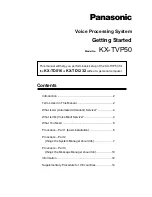
Handbook for the SX remote control Spectrograph Issue 1, 17/8/20
so there are lines from near infrared to near UV. Once calibrated, the spectra should be stable and not need further calibra-
tion, unless the spectrometer optics are adjusted in some way.
Selecting a slit width:
The standard 20 uM x 1 mm slit (position 1) is best for high resolution spectra, but restricts the light input from extended
objects to a low level and so limits the sensitivity of the spectrograph. You can use wider slit settings to increase the sensi-
tivity at the expense of resolution - this will be acceptable for many examples of faint nebulae etc. Selecting a different slit
width is simple - just use the ‘Radio buttons’ at the left side of the menu. The stepper drive on the slit wheel will make a
brief ‘tapping’ sound as it calibrates its position, and will then move to the selected slit.
The slit widths available:
1) 20uM x 1mm
2) 30uM x 2mm
3) 55uM x 2mm
4) 115uM x 2mm
5) 325uM x 2mm
6) 3mm diameter clear aperture
For maximum light input with point sources (stars or small nebulae), select slit position 6. This will open up a 3 mm circular
aperture and your spectrum will become an overlapping streak of images of the object. This can be very effective on plane-
tary nebulae and extremely faint stars.
Be careful to keep the slits as clean as possible - very small particles will cast strong dark streaks along the full length of the
spectrum. An air cannon, or soft photographic lens brush, will generally work quite well.
Here are some sample test spectra of various objects, taken with the spectrograph attached to a Takahashi FSQ106: The stars
were deliberately de-focused, so that the spectra were fairly broad to improve the line visibility.
Comet Lovejoy 2014C/2 - showing ionised carbon emissions
Alpha Corona Borealis - showing hydrogen absorption lines
Rasalgethi (Alpha Herculis) showing ‘fluted’ lines, typical of red supergiant stars


































